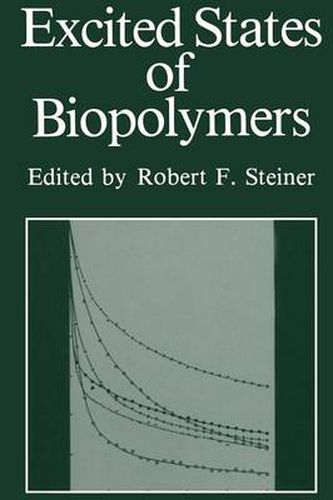Readings Newsletter
Become a Readings Member to make your shopping experience even easier.
Sign in or sign up for free!
You’re not far away from qualifying for FREE standard shipping within Australia
You’ve qualified for FREE standard shipping within Australia
The cart is loading…






This title is printed to order. This book may have been self-published. If so, we cannot guarantee the quality of the content. In the main most books will have gone through the editing process however some may not. We therefore suggest that you be aware of this before ordering this book. If in doubt check either the author or publisher’s details as we are unable to accept any returns unless they are faulty. Please contact us if you have any questions.
During the past decade, fluorescence techniques have come to occupy a position of central importance in biochemistry. Such areas as laser techniques, radiation less energy transfer, and nanosecond fluorometry have evolved from esoteric research specialties into standard procedures that are applied routinely to bio chemical problems. Indeed, discussion of the above three areas occupies the greater part of this book. Its level and approach are appropriate for the bio logical or physical scientist who is interested in applying fluorescence techniques, but is not necessarily an expert in this area. The coverage of the literature has, in general, been selective rather than exhaustive. It is likely that what is summarized here will prove resistant to the erosion of time and provide a basis for the future evolution of this rapidly developing area of science. Robert F. Steiner Catonsville, Maryland vii Contents Chapter 1 Some Principles Governing the Luminescence of Organic Molecules R. M Hochstrasser 1. Introduction … … … … … … … … … … … … … … . 1 2. Spontaneous Emission … … … … … … … … … … … … 2 2. 1. General Considerations … … … … … … … … … … . . 2 2. 2. Luminescence from Nearby States … … … … … … … … . 4 2. 3. Multiple State Decay … … … … … … … … … … … 4 3. Molecular Luminescence Characteristics … … … … … … … … . 5 3. 1. The Transition Dipole Moment … … … … … … … … … 6 3. 2. Determination of Transition-Moment Directions from Fluorescence … 8 3. 3. Polarization of Fluorescence from Crystals… … … … … … . . 9 4. Principles of Luminescence Experiments Carried Out with Lasers… … . 12 4. 1. Nonlinear Processes and Optical Pumping … … … … … … . 12 5. Coherent Interactions of Molecules and Light … … … … … … . . 16 5. 1. The Distinctions between Fluorescence and Resonance Raman Effects 17 6. Ultrafast Fluorescence Decay … … … … … … … … … … .
$9.00 standard shipping within Australia
FREE standard shipping within Australia for orders over $100.00
Express & International shipping calculated at checkout
This title is printed to order. This book may have been self-published. If so, we cannot guarantee the quality of the content. In the main most books will have gone through the editing process however some may not. We therefore suggest that you be aware of this before ordering this book. If in doubt check either the author or publisher’s details as we are unable to accept any returns unless they are faulty. Please contact us if you have any questions.
During the past decade, fluorescence techniques have come to occupy a position of central importance in biochemistry. Such areas as laser techniques, radiation less energy transfer, and nanosecond fluorometry have evolved from esoteric research specialties into standard procedures that are applied routinely to bio chemical problems. Indeed, discussion of the above three areas occupies the greater part of this book. Its level and approach are appropriate for the bio logical or physical scientist who is interested in applying fluorescence techniques, but is not necessarily an expert in this area. The coverage of the literature has, in general, been selective rather than exhaustive. It is likely that what is summarized here will prove resistant to the erosion of time and provide a basis for the future evolution of this rapidly developing area of science. Robert F. Steiner Catonsville, Maryland vii Contents Chapter 1 Some Principles Governing the Luminescence of Organic Molecules R. M Hochstrasser 1. Introduction … … … … … … … … … … … … … … . 1 2. Spontaneous Emission … … … … … … … … … … … … 2 2. 1. General Considerations … … … … … … … … … … . . 2 2. 2. Luminescence from Nearby States … … … … … … … … . 4 2. 3. Multiple State Decay … … … … … … … … … … … 4 3. Molecular Luminescence Characteristics … … … … … … … … . 5 3. 1. The Transition Dipole Moment … … … … … … … … … 6 3. 2. Determination of Transition-Moment Directions from Fluorescence … 8 3. 3. Polarization of Fluorescence from Crystals… … … … … … . . 9 4. Principles of Luminescence Experiments Carried Out with Lasers… … . 12 4. 1. Nonlinear Processes and Optical Pumping … … … … … … . 12 5. Coherent Interactions of Molecules and Light … … … … … … . . 16 5. 1. The Distinctions between Fluorescence and Resonance Raman Effects 17 6. Ultrafast Fluorescence Decay … … … … … … … … … … .